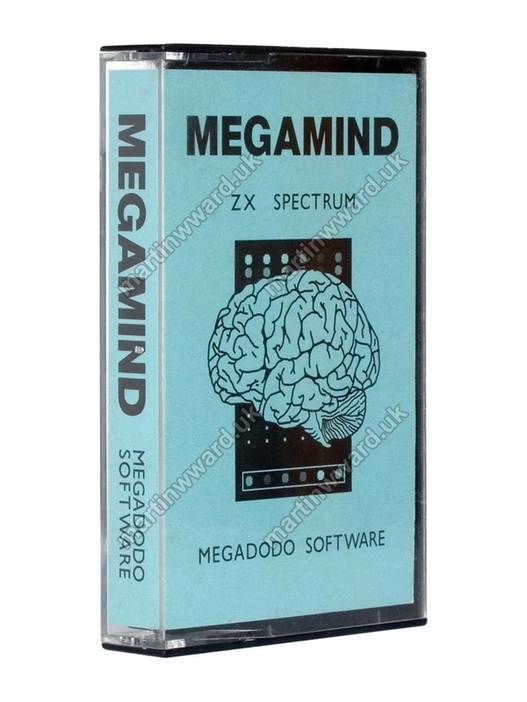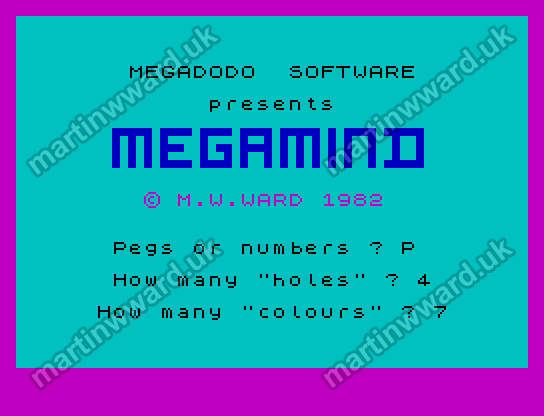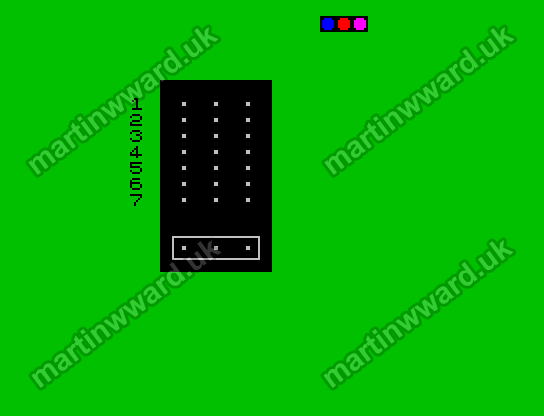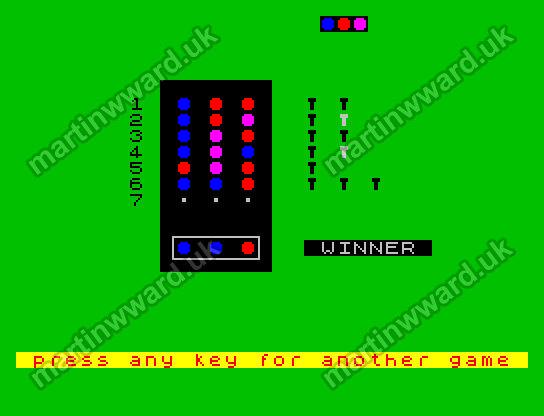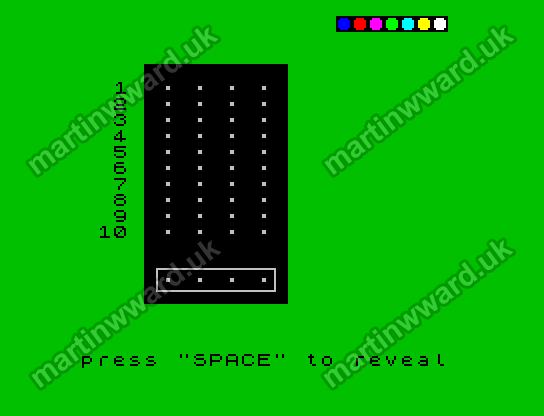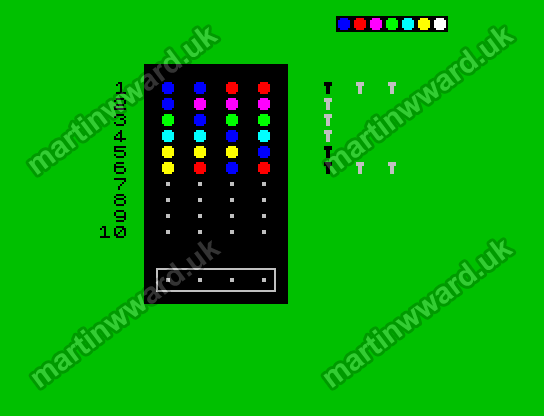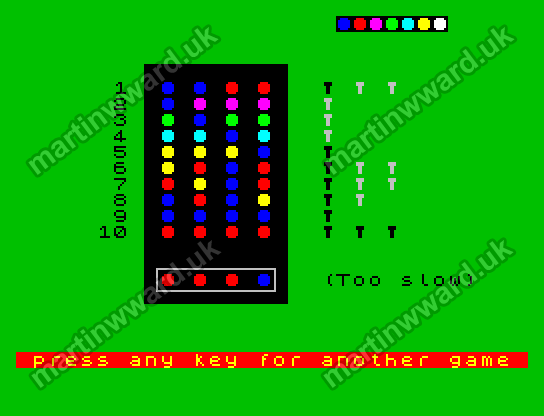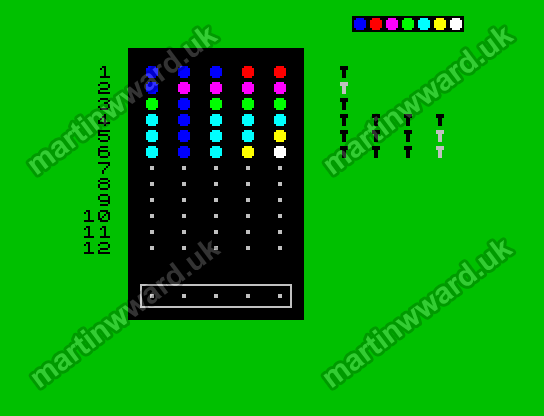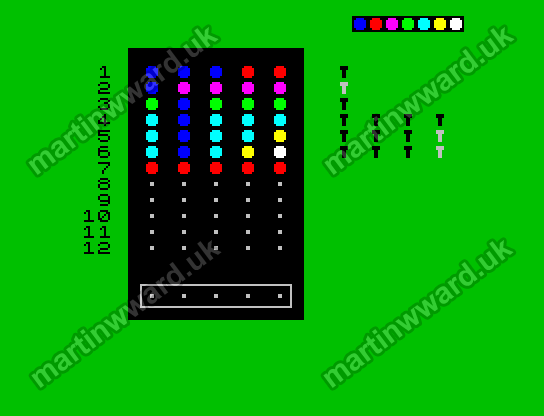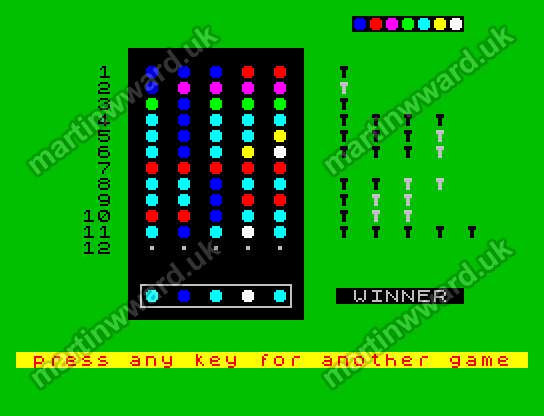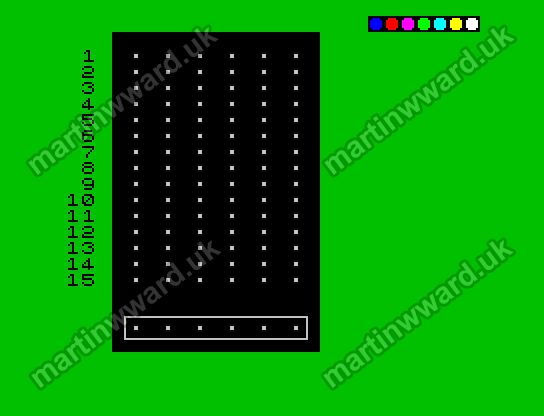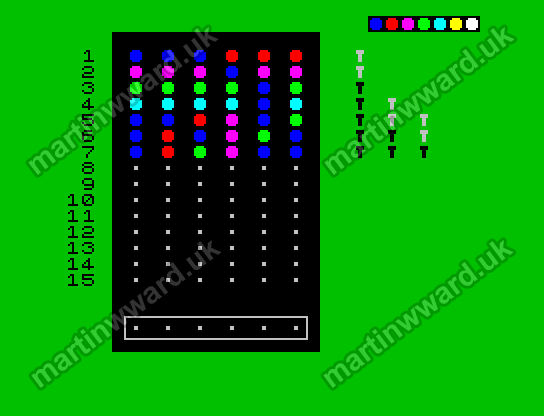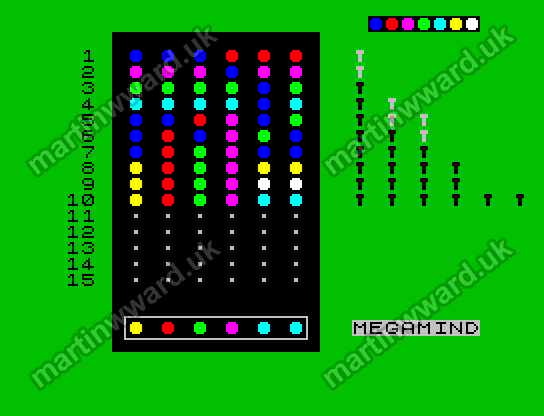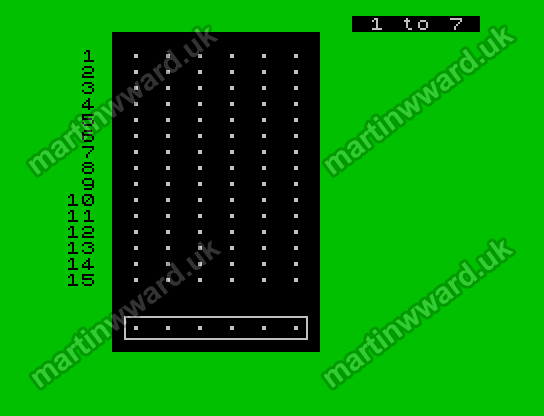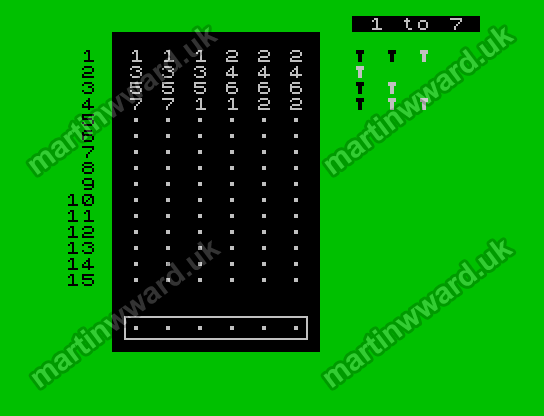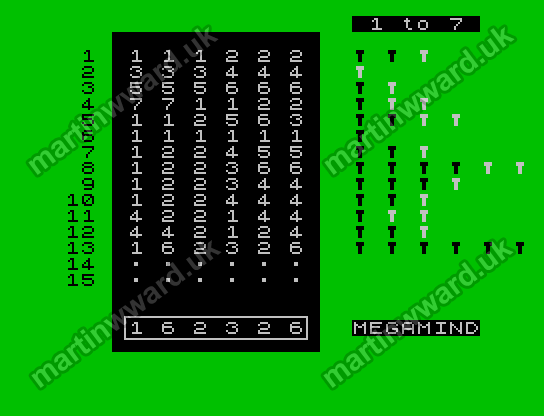The object of the game is to correctly deduce a hidden code consisting of a sequence of coloured pegs.
At the start of the game, the player chooses the length of the code (how many "holes"), and the number of different colours used in the game. The board is then displayed, and the computer randomly chooses one of the available colours for each position in the sequence. The player presses one of the ZX Spectrum's colour keys to place a correspondingly coloured peg into the left-most empty hole in the current row. This process is repeated until all the holes in the row are filled with the player's chosen colours.
At the start of the game, the player chooses the length of the code (how many "holes"), and the number of different colours used in the game. The board is then displayed, and the computer randomly chooses one of the available colours for each position in the sequence. The player presses one of the ZX Spectrum's colour keys to place a correspondingly coloured peg into the left-most empty hole in the current row. This process is repeated until all the holes in the row are filled with the player's chosen colours.
The computer then scores the row using black and white marker pegs. A black peg indicates that one of the player's pegs matches both the colour and position of one of the pegs in the hidden code. A white peg indicates that one of the player's pegs matches the colour, but not the position, of one of the pegs in the hidden code. The scoring allows the player to rule out certain combinations.
Each successive row that is played allows the skilful player to narrow down the possible combinations. The player wins the game if the hidden code is deduced correctly within the number of rows available. If the player fails to deduce the code within the maximum number of attempts, the player loses and the code is revealed.
If the player wins a game on the highest difficulty setting (6 holes using 7 different colours), they are declared to be MEGAMIND!
To allow the game to be playable on monochrome TVs, Martin added an option to use numbers instead of coloured pegs: 1 = blue, 2 = red, etc.
Copyright © Martin W Ward 2015 - 2024

